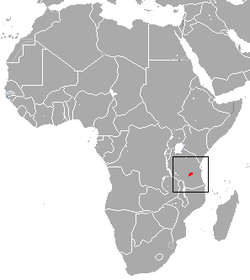| Udzungwa red colobus | |
|---|---|
 | |
| Scientific classification | |
| Kingdom: | Animalia |
| Phylum: | Chordata |
| Class: | Mammalia |
| Order: | Primates |
| Suborder: | Haplorhini |
| Infraorder: | Simiiformes |
| Family: | Cercopithecidae |
| Genus: | Piliocolobus |
| Species: | P. gordonorum |
| Binomial name | |
| Piliocolobus gordonorum Matschie, 1900 | |
 | |
| Udzungwa red colobus range | |
The Udzungwa red colobus (Piliocolobus gordonorum), also known as the Uzungwa red colobus or Iringa red colobus, is a species of the primate family Cercopithecidae that is endemic to riverine and montane forests in the Udzungwa Mountains in Tanzania. It is classified as Vulnerable in the IUCN Red List.
